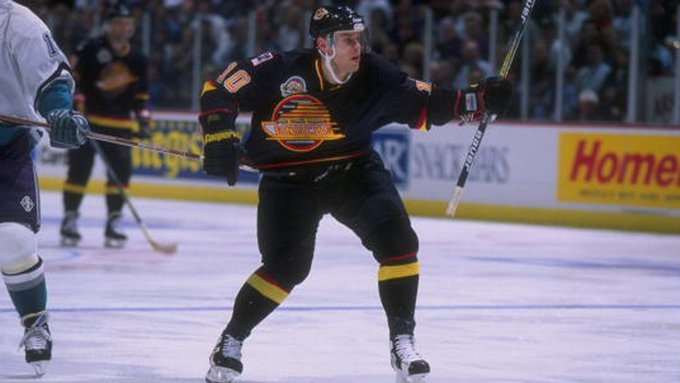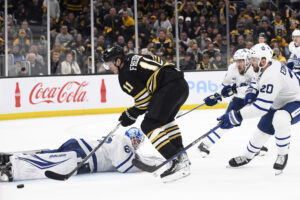The NHL Draft is just under a month away. The draft always provides plenty of drama and intrigue amongst fans and media. This has been true since the inception of the draft. While people tend to get excited about trades and prospects, there are other moments that leave people scratching their heads. For this edition, we go back to 1989 when the Cold War was ending, a hockey superpower was crumbling and why doing your homework always pays off.
The Bure Affair
By the Numbers: Pavel Bure‘s career. WATCH: https://t.co/IbVPTV0wDy pic.twitter.com/cmBpXZ9Uuy
— TSN (@TSN_Sports) March 31, 2020
Hockey Cold War
It was common knowledge that Soviet hockey stars would never play in the NHL. Teams would draft them, with late draft picks just in case something changed but it never did. That was until 1989 when Alexander Mogilny defected from the USSR to join the Buffalo Sabres. The first crack in the Soviet wall was a major one. There was a belief that drafting a Soviet player was no longer just based on hope. There was a real path to bringing in these players.
The Influx
After Mogilny’s defection, other top Soviet stars demanded their release looking to ply their trade and earn more money in the NHL. The timing was not ideal for Sovintersport, the Soviet Sports Ministry. They were strapped for cash so after years of lobbying and expressing their desires to play in the NHL (along with criticizing the ridged Soviet lifestyle), they released several of their older stars. The entire famed KLM line of Igor Larionov, Sergei Makarov and Vladimir Krutov was allowed to leave. The release from the Red Army team came with a price, however. Sovintersport would draw a commission off the player’s salaries as long as they were in the NHL. Joining the KLM line in the NHL were their ‘Green Unit’ defencemen Vyacheslav Kozlov and Alexei Kasatonov.
While the dam was cracking, it had not burst just yet. While the Soviets allowed some aging players to leave, they were very protective of their future stars, like Sergei Fedorov and Pavel Bure.
1989 NHL Draft
The hope of Soviet stars joining the NHL was becoming more of a reality. Still, with no guarantees, NHL teams were still a bit reserved. That means a prospect like Sergei Fedorov who would have been a top-five pick fell to the Detroit Red Wings in the fourth round.
Another top prospect fell all the way to the sixth round. It was less to do about his ability to join the NHL and more with teams not believing he was eligible to be drafted. Pavel Bure was selected by the Vancouver Canucks in the sixth round. There was instant confusion around the pick as most teams believed he was ineligible to be selected. The NHL had rules about drafting an 18-year-old outside of the third round. Basically, the player had to have played a minimum of 11 games, over two seasons, in a recognized league. While the pick was a gamble due to Bure’s questionable eligibility, the Canucks felt it was worth the risk.
The Bure Debate
The pick caused chaos at the draft. Team representatives stormed the stage at the Met Centre. They filed formal complaints and wanted an investigation into the pick. Teams were confused and frustrated. Other teams had the same information as Vancouver and sought clarification on the matter. Specifically, the Detroit Red Wings, who had called then NHL vice-President Gil Stein to ask about Bure. The Red Wings were told he was not eligible. Even still, the Wings planned to pick Bure in the sixth round,116th overall, and settle the debate around the eligibility after. Unfortunately for Detroit, Vancouver picked at 113 in the sixth round. The Canucks had originally planned to pick Bure in the eight-round but got wind the Edmonton Oilers wanted to take him before then, so they pulled the trigger at 113.
Initially, the pick was deemed ineligible by the league on May 17, 1990. The Canucks appealed the decision. The Canucks, however, were able to prove that Bure had played the required minimum of 11 games to be eligible. Everyone believed Bure was ineligible due to only playing in nine senior games with the Red Army. Canucks scout Mike Penny discovered that Bure had, in fact, played two additional games with the team, an exhibition game and an international game. With the help of Igor Larionov, the Canucks produced two extra game sheets that confirmed Bure’s participation and therefore eligibility.
On the eve of the 1990 NHL draft, the league deemed Bure eligible and the pick to stand. Washinton Capitals head of player development Jack Button stated the obvious: “everybody would have taken him earlier. We assumed he was not eligible… you’ve got to give the Canucks credit for doing their homework.”
Not Home Free Just Yet
After all the debate over Pavel Bure’s eligibility, the Canucks now needed to get Bure to Vancouver. While the Soviets were willing to negotiate the release of some players, the Canucks were met with resistance from the Soviet authorities. The Canucks were forbidden from speaking with Bure personally. Bure also had a lot to consider. He wanted to play in the NHL but he was concerned that if he defected, Soviet authorities might hold it against his younger brother Valeri Bure, then 15 years old.
In September of 1991, Bure, and his family left Russia for Los Angeles so they could negotiate with the Canucks. Before any official signing could occur, however, the Canucks need to settle the issue of his existing contract with the Red Army. The Canucks met with Red Army officials in October to settle the matter. As with most things, it came down to a cash settlement. The Canucks offered $200,000 for Bure’s release. Bure himself offered up $50,000 on top of the Canucks offer to ensure he could stay. The Red Army officials agreed on the $250,000 fee, and Bure was free to sign in Vancouver.
The Russian Rocket
Pavel Bure burst on the NHL scene in 1991. His combination of speed and skill earned him the nickname the Russian Rocket. In his first season with Vancouver, he scored 34 goals and 60 points in 65 games. That earned him the Calder Trophy as the league’s top rookie. In his career, Bure would lead the NHL in scoring three times, twice winning the Rocket Richard trophy.
Unfortunately, Bure’s career was marred by knee injuries that really hampered his play later in his career and ultimately led to his retirement in 2005 (although Bure had not played since 2002). In his career with the Canucks, Florida Panthers and New York Rangers, Bure had 437 goals and 779 points in 702 games. During his NHL career, Bure missed 328 games due to injury and was forced into early retirement so there will always be a ‘what could have been’ aspect of Pavel Bure’s career. Still, despite the injuries, Bure was inducted into the Hockey Hall of Fame in 2012.
Eligibility Legacy
The eligibility debate was put on ice for a long time, until 2003. The Florida Panthers tried to skirt the eligibility rules for another high-flying, goal-scoring Russian winger. The Panthers tried to select Alex Ovechkin in the ninth round of the 2003 draft. Ovechkin was ineligible because his birthday missed the cutoff date by two days. The Panthers argued that Ovechkin was eligible if they counted leap years. It was all for not, as the league deemed the pick illegal. It never hurts to try.






